Top 10 Highest-Grossing Arcade Games of All Time
Plenty has been said about the greatest games from the Golden Age of Arcades. But which ones ate the most quarters? You might be surprised when you find out.
This article first appeared on USgamer, a partner publication of VG247. Some content, such as this article, has been migrated to VG247 for posterity after USgamer's closure - but it has not been edited or further vetted by the VG247 team.
Much attention is often lavished upon the vast profits generated by the latest editions of today's biggest franchises. So much so, you'd think that this sort of financial success is something new. Actually, it isn't. Even during the very earliest days of video gaming, there were products that made mountains of money. The difference between now and then, however, is that back in the day, that revenue was earned one quarter at a time.
This is the third revision of this list, which I originally published in 2010, and then updated in 2013. Since then, additional data has been uncovered that has enabled me to further improve the accuracy of the numbers, plus rotate in new games whose data was previously unavailable. This has resulted in a more accurate list, although it's still not complete, with some estimates being made on revenue numbers – most notably, Street Fighter II and Mortal Kombat II.
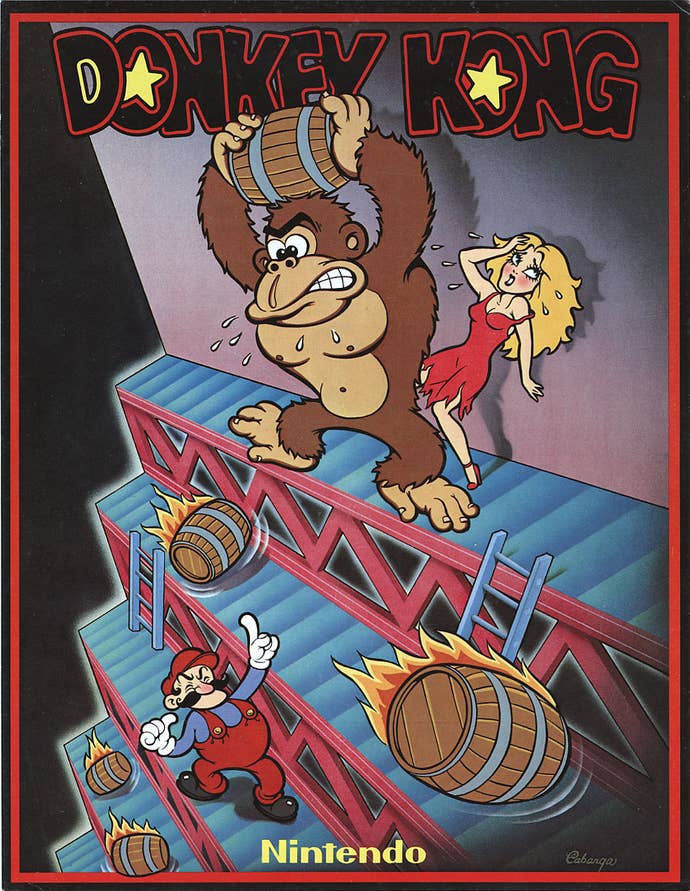
10 - Donkey Kong
Nintendo
- Cabinets Sold: 132,000
- Revenue by 1982: $280,000,000
- Inflation adjusted: $686,262,000
One of the earliest platformers, and the first game created by legendary designer Shigeru Miyamoto, Nintendo's 1981 classic coin-op was a massive hit with gamers thanks to its innovative gameplay that played out over four different screens.
Often cited as the first game to feature Mario, this is actually a somewhat revisionary fact. When the game was launched in Japan, the hero was a carpenter called Jumpman who was on a mission to rescue his girlfriend, Lady, from the clutches of his escaped pet gorilla, Donkey Kong. When the coin-op was released in America, however, Nintendo US employees weren't keen on the original Japanese names, and chose their own. Lady became known as Pauline, and Jumpman became Mario, who also gave up the carpentry business and became a plumber. A move that was evidently a good one, as it helped him go on to become one of gaming's best-known characters.
When it was first launched, Donkey Kong was seen by some as a very strange game – which is understandable when you consider that space shooters and early maze-chase games were the most common types of game during that era. However, this new concept soon caught on, and the game became a huge smash hit.

9 – Mortal Kombat
Midway
- Cabinets Sold: 24,000
- Revenue by 2002: $570,000,000
- Inflation adjusted: $748,462,000
Developed by Ed Boon and John Tobias, the legendary Mortal Kombat mightn't be the most finessed fighter out there, but when it came to pulling in the quarters, it's second only to the even-more-legendary Street Fighter series for making money.
Featuring digitized sprites, rather than the hand-drawn animation of other contemporary fighters, Mortal Kombat's big selling point is its fatalities – end-of-fight moves that often finish off the opponent in a spectacularly gory and bloody fashion. Needless to say, this didn't exactly go down well with the political establishment, and the subsequent furor and US Congressional hearing ultimately resulted in the establishment of the Entertainment Software Rating Board (ESRB) in response to calls for video games to be policed by government regulations. Considering the alternative, that's a definite silver lining to what would otherwise have been a very dark cloud.

8 – Mortal Kombat II
Midway
- Cabinets Sold: 27,000
- Revenue by 2002: $600,000,000
- Inflation adjusted: $787,607,559
The second Mortal Kombat game arrived a year after the first, and sported major graphical upgrades and five new characters. The gameplay was also significantly updated, with improved combo capabilities, new moves, and a host of Fatalities, including non-lethal Friendship and Babality finishers.
By the time this second arcade game was released, the Mortal Kombat franchise was beginning to become a juggernaut that would ultimately spin off comics, a "Kard" game, movies, and of course a boatload of home versions – which would go on to sell some 26 million games over the years. Indeed, such is the success of the franchise, by 2011 it held 10 Guinness world records, including "most successful fighting game series," "largest promotional campaign for a fighting video game" (Mortal Kombat 3), "highest grossing film based on a fighting video game" (Mortal Kombat 1996), and "most successful video game spin-off soundtrack album" (Mortal Kombat: Original Motion Picture Soundtrack).
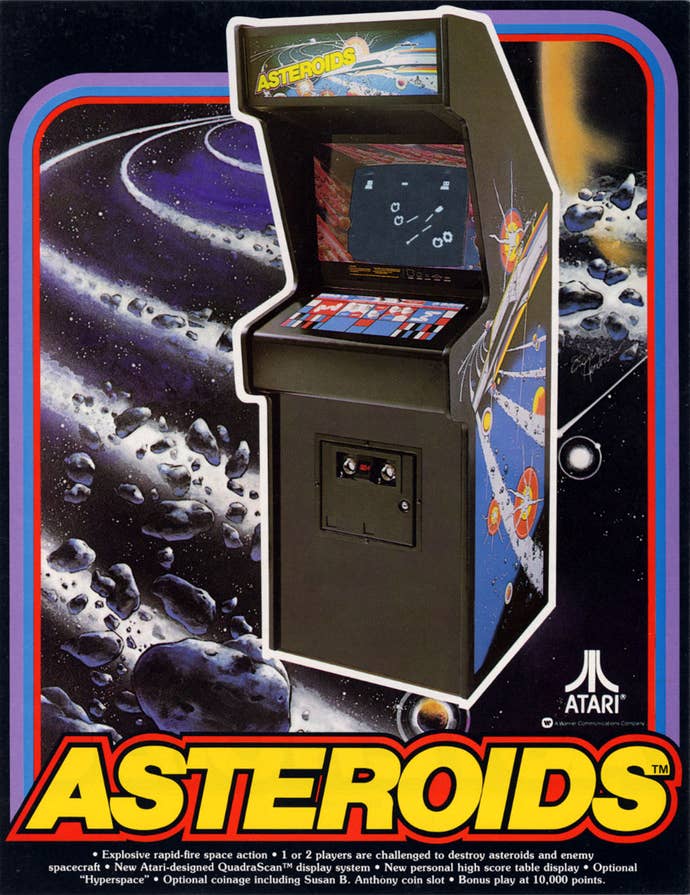
7 – Asteroids
Atari
- Cabinets Sold: 100,000
- Revenue by 1991: $800,000,000
- Inflation adjusted: $1,346,548,823
Atari's Asteroids is a vector graphic classic from 1979. Inspired by the first fully-fledged video game, Space War, Asteroids was built using hardware from the earlier Atari vector coin-op, Lunar Lander.
The end result was a game that was far more sophisticated than the more static Space Invaders-type format that tended to have limited movement, and gameplay based around a defensible position at the bottom of the screen. In Asteroids, the player had to deal with threats from all sides, plus missile-firing space ships.
Despite its similarities to Space Wars, most players wouldn't have seen that rare coin-op when Asteroids was launched, and therefore Atari's rock-breaking game was received largely as a new concept – and quite a challenge. Thanks to that, players poured money into the machine, of which 70,000 were sold across America, and 30,000 units were sold abroad.
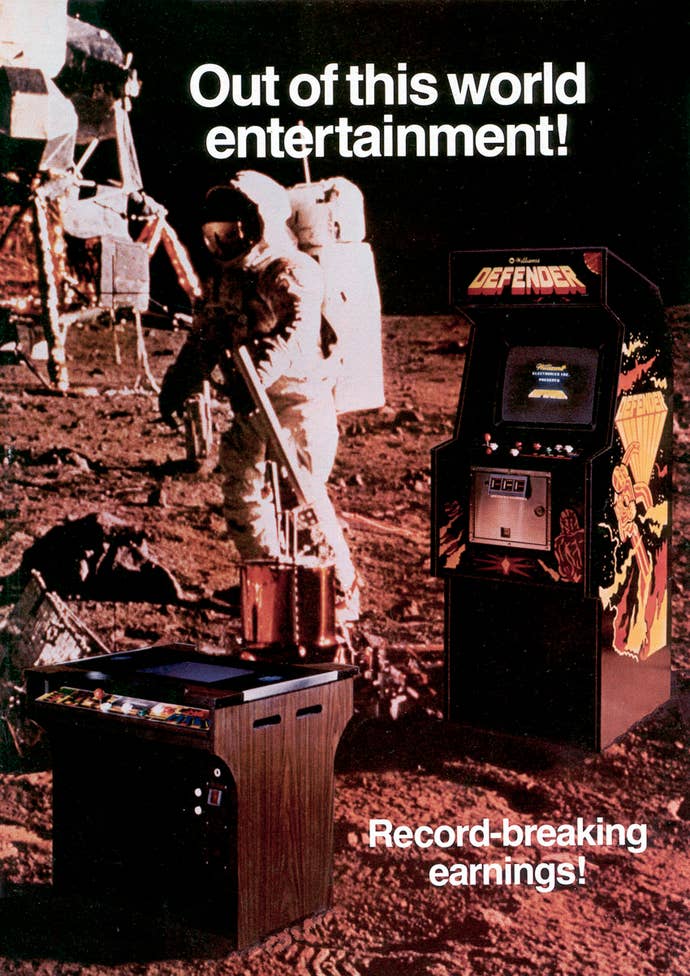
6 - Defender
Williams
- Cabinets Sold: 60,000
- Revenue by 1993: $1,000,000,000
- Inflation adjusted: $1,588,463,873
Featuring an intimidating number of buttons, and enemy ships whose behavior patterns were extremely sophisticated for the period, Defender was one of the most memorable shooters of the early 80's.
It was the creation of Eugene Jarvis and Larry DeMar, who'd previously been pinball machine designers at Williams. They spent months iterating a design for a new video game inspired by their favorite aspects of Space Invaders and Asteroids. The end product was a revelation. Featuring search-and-rescue gameplay, a variety of different alien types, and the threat of a planet exploding, Defender provided players with a high-energy, relentless, colorful, and loud shoot 'em up experience that made other contemporaries of the era look positively pedestrian.
Defender's high level of challenge helped it devour hundreds of millions of quarters as gamers got to grips with its complex gameplay – and of course the game would go on to become one of the enduring icons of the Golden Age of Arcades.
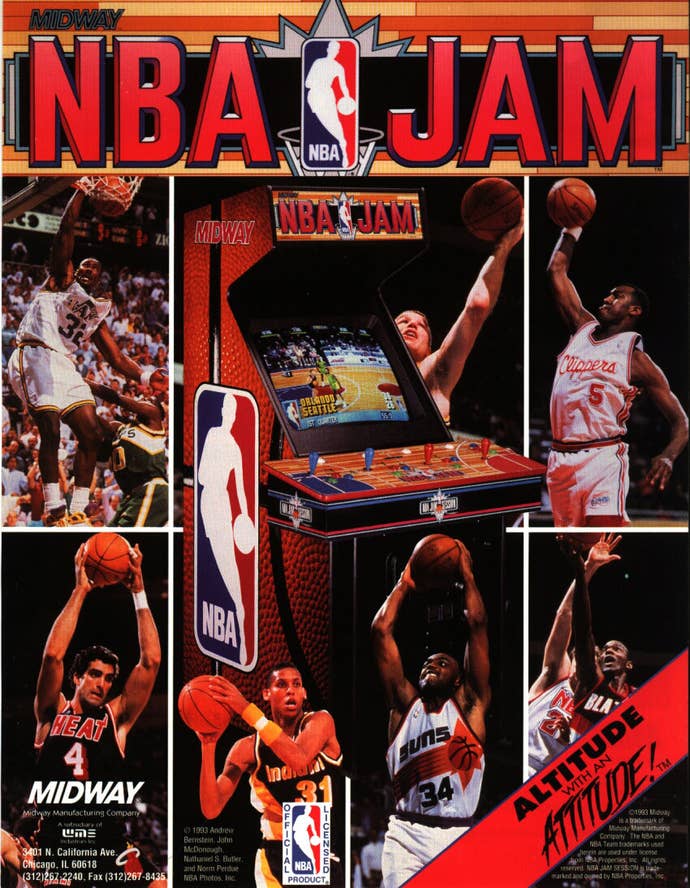
5 – NBA Jam
Midway
- Cabinets Sold: 20,000
- Revenue by 1994: $1,100,000,000
- Inflation adjusted: $1,704,501,968
Released when arcades were having a second wind in 1993, NBA Jam follows in the footsteps of the 1989 basketball Arch Rivals, which also features 2-on-2 action. However, where Arch Rivals never really achieved truly critical mass, NBA Jam was hugely popular largely thanks to its official license enabling it to feature real team names and the digital likenesses of famous players.
Gameplay was larger than life, and had few rules, resulting in a fast and furious pace of action that often featured spectacular net shots and slam dunks – accompanied by iconic NBA Jam catch phrases like "He's on fire" and "Boomshakalaka!"
Rather amusingly, in 2008, designer Mark Turmell confirmed that, as many NBA Jam players had thought, the game had a slight bias against the Chicago Bulls. If you were playing the Detroit Pistons, the Bulls would miss last-second shots in close games. Boomshakalaka indeed.

4 – Ms. Pac-Man
Bally Midway
- Cabinets Sold: 125,000
- Revenue by 1987: $1,200,000,000
- Inflation adjusted: $2,494,552,816
The original Pac-Man's largely non-violent gameplay had already proved appealing to females, so Illinois-based Midway Manufacturing corporation decided to go the whole hog and make a Pac-Man game specifically designed to attract them. The result was Ms. Pac-Man, essentially Pac-Man with a pink bow.
As well as featuring four new maze designs, the ghosts were programmed to occasionally move randomly. This was a deliberate move to prevent players from learning and using patterns to beat every level, as was the tactic in the original Pac-Man. Because of that, the game was considerably more challenging than its predecessor. However, that didn't stop players from eventually clocking the machine and discovering that, like Pac-Man, the game's 256th level was glitched and impossible to complete.
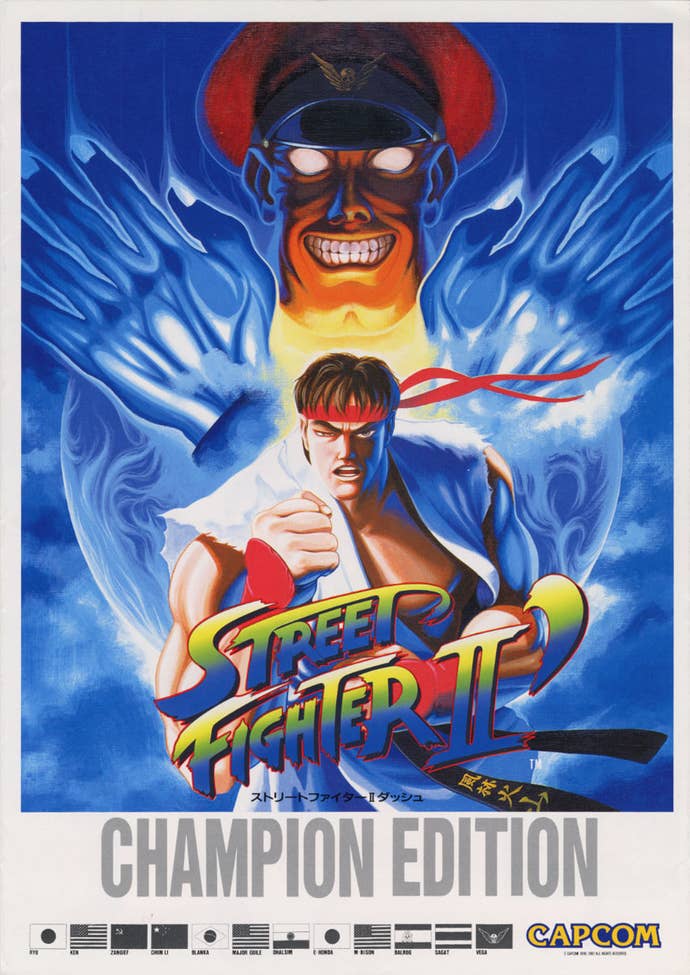
3 - Street Fighter II/Champion Edition
Capcom
- Cabinets Sold: 200,000 (60,000 SF II, 140,000 CE)
- Revenue by 1995: $2,312,000,000
- Inflation adjusted: $3,582,553,228
Capcom's sequel to its 1987 arcade hit was one of the gaming milestones of the 90's. While the original Street Fighter introduced many of the series' fundamental design elements, Street Fighter II evolved them a quantum leap forward, creating a benchmark fighting game design that still stands true today. Thanks to its ultra-competitive gameplay, the machine was an instant hit, selling some 60,000 units globally. Its rapid player turnover helped keep the coins flowing – a welcome relief to many arcade operators, who'd seen revenues decline since their peak in the mid-80's.
With Street Fighter II bringing in substantial revenues, it didn’t take Capcom long to produce an updated version (which for the purposes of this list isn't considered a standalone sequel because it's essentially an upgrade kit). In April 1992, Champion Edition hit the arcades with rebalanced gameplay, four playable Grand Masters, and the ability for players to engage in mirror matches for the first time. Despite being cosmetically very similar to Street Fighter II, CE sold an incredible 140,000 boards and new cabinets.
Several reports cite Street Fighter II as earning $1.5 billion by 1993, and that in turn has been erroneously attributed to coin-op revenue. However, the root source – Children, Adolescents and Media Violence by Steven J Kirsh – is actually referring to home console versions and merchandising. The reality is, there is no current definitive source for revenue of the machine. Arcade owners often reported “Street Fighter II” on revenue sheets, rather than citing a specific version, and many arcades updated to the new Hyper Fighting board within a year. Also, by the early 90’s, arcades were in decline, and revenue records were often not published. At that point, it was much more about shifting hardware, than their actual cash yield. Therefore, the figures here are estimated, based on the fact that 200,000 combined cabinets and boards were sold, and taking into account player engagement and turnover. These numbers are also conservative. Due to the relative ease of making illegal versions of Capcom’s CP System boards, many pirated copies of the arcade game also existed, which would likely boost the revenue number above considerably. But for obvious reasons, the actual sum will never be known.

2 - Space Invaders
Taito
- Cabinets Sold: 360,000
- Revenue by 1982: $2,702,000,000
- Inflation adjusted: $6,612,228,000
One of video gaming's all-time classics, Space Invaders kicked off what is now called the Golden Age of Arcades, a period of history spanning the late 70's to the mid 80's that saw unprecedented advances in gaming design and technology.
The machine was launched in Japan in June 1978 and swiftly became a cultural phenomenon. By the end of the year, an incredible 100,000 coin-ops had been installed across the country. Such was its immense popularity, the sheer volume of people shoveling money into its coin slots created a temporary shortage of the 100-yen coin.
Space Invaders swiftly became a major export, and was soon rejuvenating arcades around the world, whose mechanical machines and, at that point, only basic technological innovation had seen them in consistent decline since the 50's. This literal reversal of fortune was fueled by millions of players, who queued time and time again to test their mettle against the invading hordes. The revenue generated in the states in its first year was greater than that of the highest-grossing movie of the period – Star Wars. Not bad for an industry that had only just turned five years old.

1 - Pac-Man
Namco
- Cabinets Sold: 400,000
- Revenue by 1990: $3,500,000,000
- Inflation adjusted: $7,681,491,635
Since Space Invaders has come and gone, the number one quarter eater of all time should be no surprise at all. Well, unless you didn't grow up playing arcade games.
Gaming's first major mascot, and perhaps its most recognizable and enduring character, Pac-Man burst onto the scenes in 1980 and became an overnight sensation. In an era where almost all games were space-themed shooters, Pac-Man's non-violent, maze-chase gameplay presented something fresh and new. It also did something else few other games did at that time – and that was appeal to female gamers.
This universal attraction helped bring an unprecedented number of players into arcades around the world, who shoveled billions of quarters into its slots. This popularity turned Pac-Man into an icon, giving rise to the first generation of gaming merchandise, with everyone's favorite yellow dot-gobbler emblazoned on everything from t-shirts and hats to lunchboxes and dinking glasses.
Since then, Pac-Man has gone on to star in more than 30 other games – but most gamers will always associate him with this iconic machine.
Arcade flyer illustrations sourced from Arcade Flyer Archive
